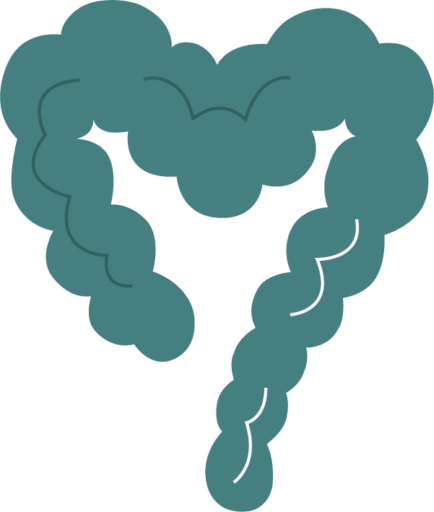
Stool – helps you understand your gut
Do you find it awkward to talk about poop? Completely understandable! However, by looking into the toilet, you can learn more about how what you eat affects your gut and thereby gain a better understanding of which diet works best for you.
The gut does more than just help us digest food. The bacteria in the intestines also affect our mental health, sleep, weight, and cravings for certain foods. You can also learn a lot from the consistency and appearance of our poop. That’s why researchers Stephen Lewis and Ken Heaten at the University of Bristol developed ‘The Bristol Stool Chart in the late ’90s, according to the British magazine The Conversation.
"Number two" is a sensitive subject
An important question during visits to a doctor or dietitian is about your poop. Not everyone is comfortable discussing their poop with a complete stranger, so within healthcare, we use the ‘Bristol Stool Chart’ to classify the type of poop one has. This makes it easier for both the person describing their poop and the one planning the treatment to achieve good results. As you can see, the scale is very concrete and visual, minimizing the risk of misinterpretations and misunderstandings.
We all have to poop – it’s even vital. However, we’re rarely comfortable talking about it. But the poop we produce can provide valuable information about your gastrointestinal health. Through the Bristol Stool Chart, people with gastrointestinal symptoms can now be mapped by clearly describing to their doctor how their poop looks in the toilet. This can be done without having to provide samples.
For most of us, the poop we excrete can, of course, vary greatly depending on what we’ve done and eaten in the past 24 hours. A period of dehydration, perhaps in connection with a day of sustained exercise or not having been to the bathroom for a while, may result in drier poop than usual. Conversely, an unusually spicy meal can generate looser, more watery poop.
The Bristol Stool Chart contains 7 different types of faeces with corresponding analysis, ranging from constipation to watery stool.
But how should the stool look?
Ideally, it should be easy to have a bowel movement without straining. At the same time, there should be no urgency to go to the bathroom. According to the Bristol Stool Chart, there are three variations of how the stool looks in these cases: 1. Sausage-like with some cracks on the surface and up to 2 to 3 cm in diameter. 2. Longer sausage or snake-like with a smooth consistency. 3. Soft lumps with clear-cut edges. The first two types indicate normal bowel function, while number three may indicate a lack of fibre.
Drier types of stool that cause mild or severe constipation tend to create prolonged pressure that damages the mucous membrane in the colon. In these cases, the stool comes out in small, hard lumps (in severe constipation) or sausage-shaped lumps (in milder constipation). Dry stool can also stretch the anal canal, making the toilet process strenuous and painful. Straining too much during dry stool increases the risk of damaging the anus, haemorrhoids, prolapse, and the formation of diverticula. In these diverticula, infections and inflammation can also occur.
Loose and moist stool, on the other hand, can be a sign of intestinal infections, such as a stomach parasite like Giardia, or an inflammatory condition like Crohn’s disease. Generally, a softer but not watery stool is considered best.
Any changes in bowel function leading to a prolonged period of drier stool and a sense of incomplete evacuation – or watery stool and an urgent feeling – should be discussed with your doctor.
Why is water important?
It is primarily the water content that distinguishes the various stool types from each other. The colon is a fantastic “recycling centre” for the body, and the reuse of water is one of its most important functions. Every day, we use about 9 litres of fluid in digestion, including 1.5 litres of saliva, 2.5 litres of gastric juice, and 0.8 litres of bile. However, our stool cannot even come close to this volume.
The longer it takes for food to pass through the colon, the more water needs to be reabsorbed, and the drier the stool becomes. So, all factors affecting how quickly food passes through the colon are crucial for the consistency of the stool. Lifestyle is one such factor, just like antibiotics, pain medications, and physical inactivity.
And how much does food affect this?
Certainly a lot. In, for example, an observational study in Southern and Eastern Africa during the 1970s and 80s, the researchers compared the gut health of Caucasians eating a Western diet with native Africans living a traditional lifestyle. The study found that drier stool types and constipation were more common in individuals consuming a Western diet. The results showed different levels of fibre in the diet of these two populations, which in several other studies has been related to, among other things, colon cancer.
Fiber affects gut function in two ways
When a healthy person eats foods high in fibre, the food absorbs water and swells. This increases the volume of the stool, allowing the food to pass through the intestine more quickly and the intestine to be rapidly cleared of any potential toxins that may have been present in the food.
There are also more potent components in dietary fibers, such as fermentable carbohydrates like resistant starch (a form of starch that is not processed by the small intestine), beta-glucans, and oligosaccharides commonly found in whole grains, legumes, fruits, and vegetables. These serve as a crucial nutrient source for millions of bacteria living in the gut microbiota. They stimulate the production of short-chain fatty acids, which are like gold for our bodies. One of these short-chain fatty acids, butyrate (or butyric acid, which gives Parmesan cheese its aroma), reduces the time it takes for food to pass through the intestine by strengthening the contraction of the muscles around the colon.
Along the way, these short-chain fatty acids also strengthen and repair the layers of cells surrounding the colon. They destroy cancer cells, reduce inflammation and pain in the intestine, and increase the feeling of fullness.
A dilemma with our Western diet is precisely the amount of fibre. An average Westerner may consume as little as 12-15g of fibre per day. Although no upper limit for fibre intake has been defined, it is recommended, for example, in Australia to consume at least 30g of dietary fibre per day.
Consider the type of fiber you eat
Yeah, it’s not that simple. If you have symptoms like a restless or bloated stomach, constipation, or diarrhoea, it doesn’t help to eat more or less fibre; it’s the right kind of fibre that matters. You can get help with this from a dietitian who is familiar with the low FODMAP diet.
Especially IBS symptoms can be exacerbated by fibre sources rich in fermentable carbohydrates (FODMAPs). This includes ingredients like onions, garlic, apples, pears, milk, legumes, certain types of bread and pasta, cashews, etc.
But most of us need to get more fibre through our diet. This is to make our toilet visits more comfortable, to allow the food we eat to pass through the intestine at the right pace, and thus to enjoy a good gut feeling.
Source: The Conversation
Sofia Antonsson
Reg. Dietitian, Belly Balance
Take control of your IBS today!
Ready to reclaim your life from IBS? Our app provides the tools and guidance you need to manage IBS effectively.
Download the App



